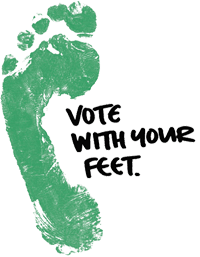The Volokh Conspiracy
Mostly law professors | Sometimes contrarian | Often libertarian | Always independent
Voting with Your Feet Does Not Lead to Segregation
Recent evidence suggests it actually reduces it.

A longstanding concern about "voting with your feet" is the fear that it will increase racial and ethnic segregation. Given the opportunity, most people might choose to "stick to their own kind" or at least avoid historically unpopular minority groups. Recent data, however, paints a very different picture. Far from exacerbating segregation, residential mobility actually seems to reduce it. Bloomberg economics columnist Noah Smith summarizes some of the data here:
Surprisingly, evidence seems to show that Americans are increasingly open to living in diverse neighborhoods. A 2016 paper by the National University of Singapore's Kwan Ok Lee finds that since 1990, white flight and white avoidance of black neighborhoods has decreased dramatically. In fact, white Americans in recent decades have tended to move toward diversity rather than away from it.
Urban economist Joe Cortright, blogging at City Observatory, summarizes the results. Lee looks at U.S. Census tracts, neighborhoods that on average have about 4,000 residents. In addition to the racial makeup of neighborhoods, she was able to track where individuals moved to and from.
Lee's first finding is that American neighborhoods are becoming more diverse. Majority-white neighborhoods were about two-thirds of the total from 1970 to 1990, but during the next two decades that number was only 57 percent. The probability of single-race neighborhoods becoming mixed increased substantially. Meanwhile, a small but growing number of neighborhoods have a substantial numbers of whites, blacks and Hispanics or Asians….
Lee's final finding is the most striking. She found that once Americans move to a mixed-race neighborhood, they tend to either stay there, or move to another mixed neighborhood. This is true for both white and black Americans. In other words, neighborhood diversity isn't just a result of changing demographics, but of Americans choosing to live near people of other races.
These findings are not as surprising as they might seem. Even if people do not care about ethnic diversity for its own sake, diverse areas have important advantages that many potential foot voters value, including greater economic growth and job opportunities. The evidence of foot voting decisions is also consistent with other data indicating increasing racial and ethnic tolerance, such as increasing rates of interracial marriage.
Evidence indicating that Americans are becoming more tolerant may seem difficult to square with the alarming growth of poisonous identity politics on both left and right, exemplified by the rise of Donald Trump, among other things. One possible way to reconcile the seeming contradiction is that Trumpism represents a revolt of the old order, not the wave of the future. This is consistent with the fact that his support is overwhelmingly drawn from older, lesser-educated whites. It is also likely that people's foot-voting decisions are based on greater knowledge and more careful consideration than their choices at the ballot-box. Those who vote for dangerously divisive politicians may behave very differently in other aspects of their lives.
The available evidence also undercuts a closely related concern about foot voting: the claim that it leads to a "big sort" under which people cluster with those who have similar political views.
This is not to suggest that all is entirely well in the realm of foot voting. Many people who would like to move to diverse and economically dynamic areas are prevented from doing so by zoning restrictions that artificially inflate the price of housing. This, along with restrictive licensing, creates barriers to mobility that severely impede the ability of both minorities and poor whites to improve their lives by voting with their feet. If we want to expand opportunity for the poor, increase economic growth, and further diminish residential segregation, breaking down obstacles to mobility would be a great place to start.


Show Comments (63)